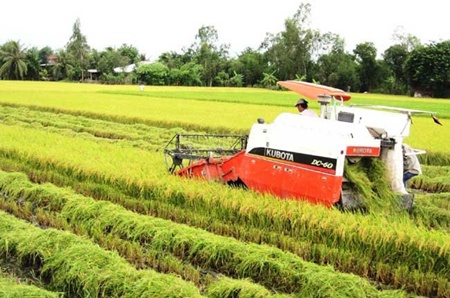Investments from Chinese investors have been flocking to Vietnam, pouring money into the two main business fields – textile & garments and real estate.  Troy Griffiths from Savills A report of the Foreign Investment Agency showed a “high jump” of the Chinese foreign direct investment (FDI) in Chinese FDI in A Not only eyeing real estate projects, Chinese investors have also injected big money in textile and garment factories in Bloomberg newswire has reported that the prices of Chinese Texhong Textile shares have increased by 445 percent over the last 12 months thanks to the investment projects in In mid-2013, the first stage of the fiber factory project was kicked off in Quang Ninh province with the investment capital of $300 million. This is the fourth factory of Texhong in The Hong Kong based Crystal Group has recently announced the investment deal of $425 million in Pacific Crystal, a textile factory, and $120 million in a garment project, covering more than 70 hectares of land in the Lai Vu Industrial Zone in Hai Duong province. Dr. Alan Phan, an expert about Chinese market, noted that three years ago, no Chinese thought they needed to invest in Big consequences warned Diep Thanh Kiet, Deputy Chair of the HCM City Textile, Garment and Embroidery Association, warned that Vietnamese enterprises would be at a disadvantage amid the Chinese strong investments in the textile and garment industry. When cooperating with Vietnamese outsourcing enterprises, Chinese may “sacrifice” the profit from the outsourcing to attract laborers from Vietnamese enterprises, while they would only focus on making profit from material production. As such, domestic enterprises are likely to lose the battle. As for the enterprises that buy materials and sell finished products, Chinese would have more advantages than Vietnamese because they can buy materials at lower prices thanks to the existing relations. While most Vietnamese have to pay money on material deliveries, Chinese can make deferred payments. This would help them make products with lower production costs. Diep has also warned that Vietnamese enterprises would be more heavily reliant on Chinese materials in the future. If so, they would do the outsourcing for others for ever. If the Chinese material factories shut down, domestic companies would lose the material supply sources. The high Chinese investment is believed to lead to the trade deficit increase, because Chinese investors tend to bring their equipment and machines to NCDT |
↧
Article 13
↧